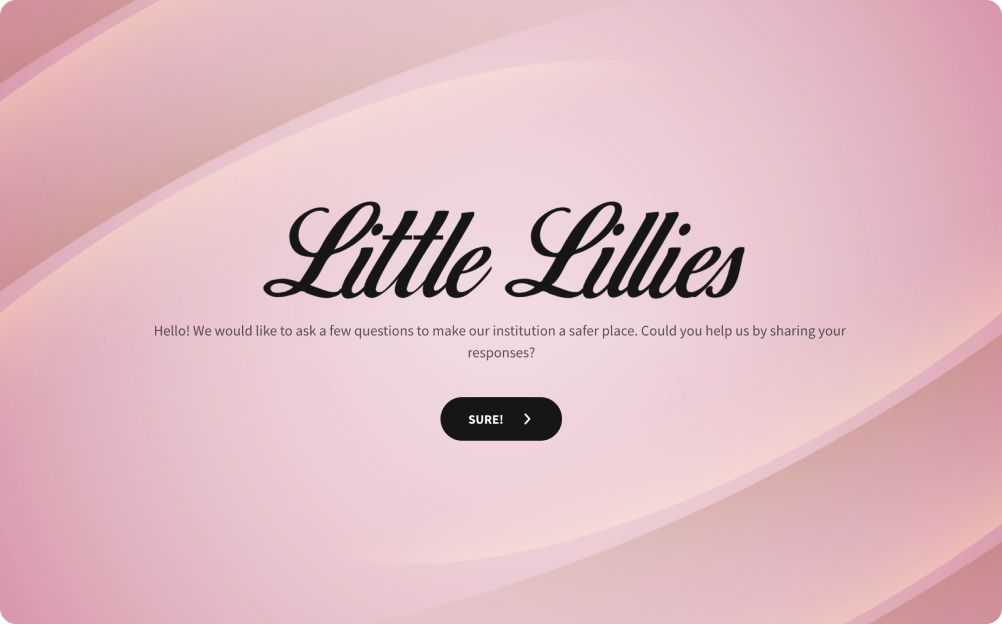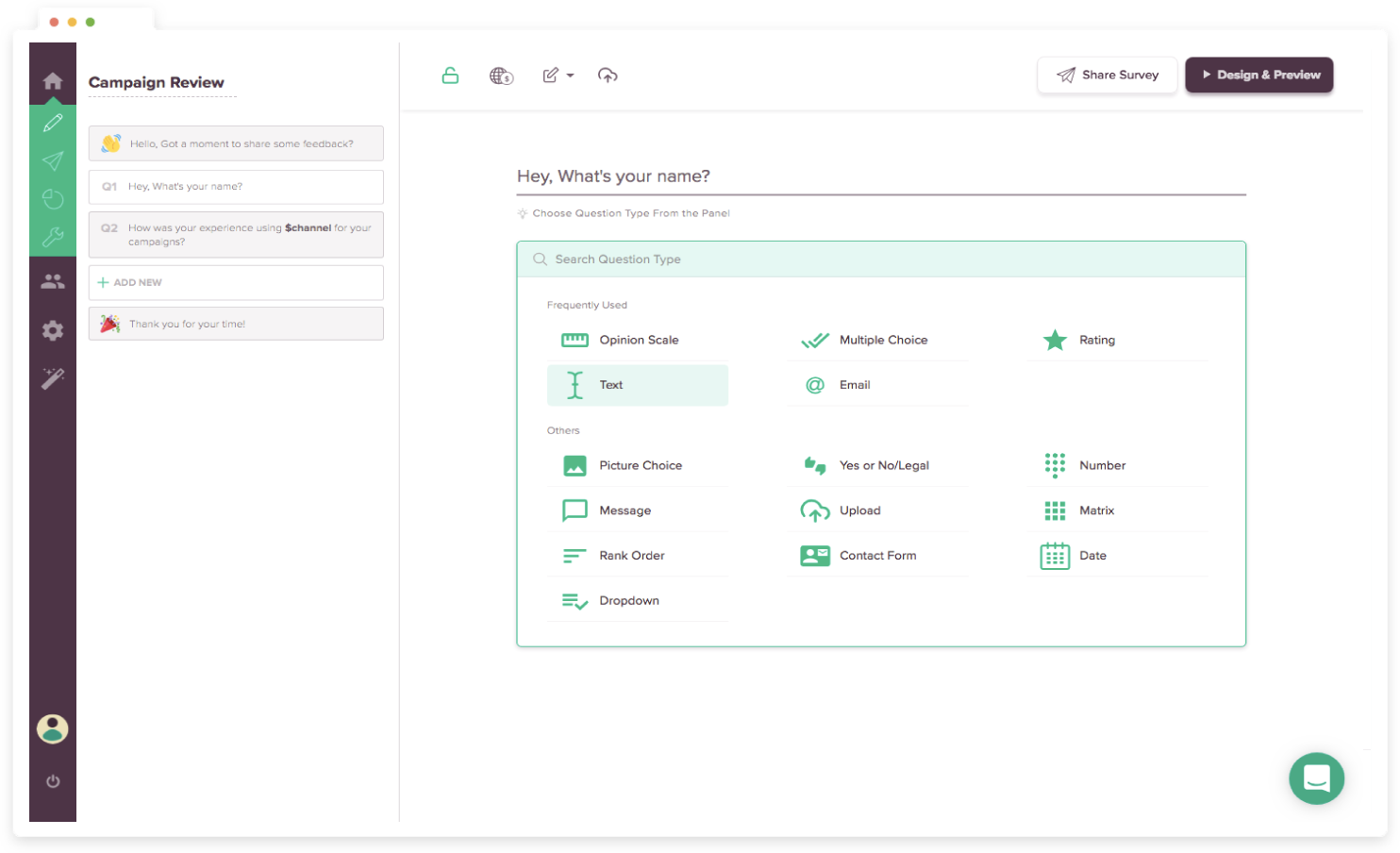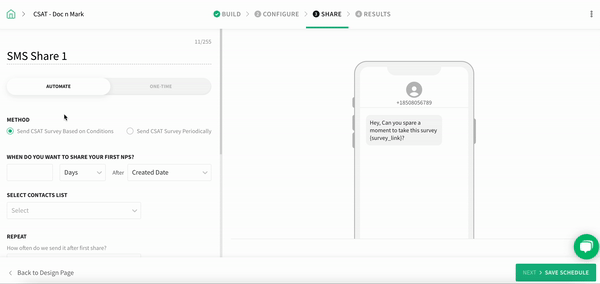School Climate Survey Template
Features of School Climate Survey Template
Get a clear picture of the actual student experience. Enable honest and unfiltered opinions by removing the fear of judgment or potential consequences.
Share as a SMS, email, QR Code, or custom link. Enable your students to respond from wherever they are, whether that's in between classes or after band practice.
It's your responsibility to keep your students' data safe and protected. SurveySparrow surveys are SSL-encrypted for just this purpose.
A safe environment starts with the School Climate Survey Template
How to Survey Different Student Groups for Your School Climate Survey
Surveying students from different age groups – from elementary to high school – requires a tailored approach for better participation. Here’s how to approach different student groups for your school climate survey:
I. Key Considerations:
- Goals & Questions: Define your survey objectives and ask clear, age-appropriate questions. They should focus on relevant aspects of the school climate (safety, relationships, learning).
- Survey Format: Choose survey formats suitable for each age group (online, paper, visual, interviews, etc.).
- Anonymity: Maintain anonymity to encourage honest feedback.
- Support: Test surveys, provide assistance throughout the process, and keep it positive.🙂
II. Surveying High School Students
- Questions: Use a mix of question types (multiple-choice, Likert Scale, open-ended).
- Platform: Use online platforms like SurveySparrow or Google Forms, but have a paper option available.
- Promotion: Clearly communicate the survey’s purpose, and offer an incentive for completing it, if possible.
III. Surveying Middle School Students
- Simplify: Use clear, simple language in questions.
- Visuals: Incorporate images or icons for greater understanding.
- Balance: Use a mix of multiple-choice and Likert scale questions plus open-ended ones.
- Keep it Short: Aim for a 5-minute survey length at the most.
- Adult Support: Have a trusted adult available for questions and assistance.
IV. Surveying Elementary School Students
- Focus on the Concrete: Ask about observable experiences (e.g., “Do you feel happy at school?”).
- Visual Answers: Use emojis, pictures, or symbols as answer choices.
- Alternatives: Try interviews or sorting activities alongside surveys.
- Engagement: Make it fun with colors, games, and short activities.
- Read Aloud: Read questions aloud for everyone, and offer help as needed.
Tailoring Your Approach
Here are some additional tips:
- Involve students: Ask students for feedback on survey design and topics.
- Data analysis: Analyze data by grade level or student group to identify specific needs.
- Act on the findings: Use the insights to guide school improvement efforts.
How is This Form Useful For Schools?
Enhanced Engagement
Improve student participation by displaying questions tailored to their responses. Use display/skip logic to personalize your surveys, and boost engagement with GIFs, emojis and videos. All of these features will make the survey easier and more enjoyable for the students to fill.
Creative Customizations
Capture your students’ attention with a variety of themes, colors and fonts. Additionally, you can brand surveys to reflect your school’s identity. You can also create multiple thank-you pages to personalize the ending, based on specific variables from the respondent’s answers. For eg., if a student reports experiencing bullying, they are directed to a thank you page with resources for reporting bullying and getting support.
Time-Saving Automation
Simplify the survey process by automating recurring surveys. With this, you can eliminate the need for manual scheduling and distribution. This helps save a lot of time! You can also set the frequency and timing of surveys to suit your needs, ensuring consistent data collection without extra effort.
Streamlined Data Management
Easily analyze survey data by exporting the responses to Google Sheets. Even better, you can use SurveySparrow’s visual dashboards to track progress, spot trends, and summarize the results at a glance. You can also gain valuable insights into student perceptions and emotions. As a result, this leads to informed decision-making and improvements in teacher-student relationships.
FAQs
What topics should our survey cover?
Your survey should include these 5 core elements: 1. Safety (physical, social and emotional), 2. Relationships (student-teacher and peer-to-peer), 3. Teaching and Learning, 4. Institutional Environment, and 5. Student Support Systems. Here are examples of questions you can use: Student Satisfaction Survey Questions: 100+ Samples.
How often should we administer the survey?
The frequency of a school climate survey can vary depending on many factors – including the size of the school, the stability of the school environment, and the goals of the survey. For eg., a school that’s undergoing a major change may share these surveys frequently to measure the impact of interventions.
How do we ensure student privacy and confidentiality in the survey process?
To protect the students’ privacy, institutions should avoid collecting personal details and use secure channels for sharing surveys. They should assure students that their responses will be kept confidential and presented only in summarized form. In addition, they should be transparent about how the data will be used, and obey the local privacy laws.
Who should be involved in developing the survey?
Developing the survey is usually a collaborative effort among various stakeholders – including school administrators, teachers, students, parents/guardians, and sometimes external experts in education research.
How do we communicate the survey findings to students, staff, and parents?
Communicate the survey findings transparently through multiple channels like presentations, reports, and school websites. Tailor the message to each audience, highlighting key findings, action plans, and opportunities for involvement.
How do we adapt the survey for students with disabilities?
Use simpler language, visuals, and audio support for questions. Offer picture choices and allow verbal responses. Also, consider administering the survey one-on-one, and consult with experts if possible for specific adjustments. Finally, pilot test the adapted survey to ensure it meets student needs.
Should we include questions about sensitive topics like bullying or discrimination? If so, how do we approach them responsibly?
Ensure anonymity throughout the survey. In addition, provide a means of reporting for students who may be affected by the topics as well as resources for support.
Other Useful Survey Templates:
See All

Audition Form Template

Document Delivery Form Template

Grocery Store Survey Template
How to Use the School Climate Survey Template
Step 1 : Define Survey Goals

Step 2: Develop Questions

Step 3: Select a Survey Channel

Step 4: Test and Gather Feedback




